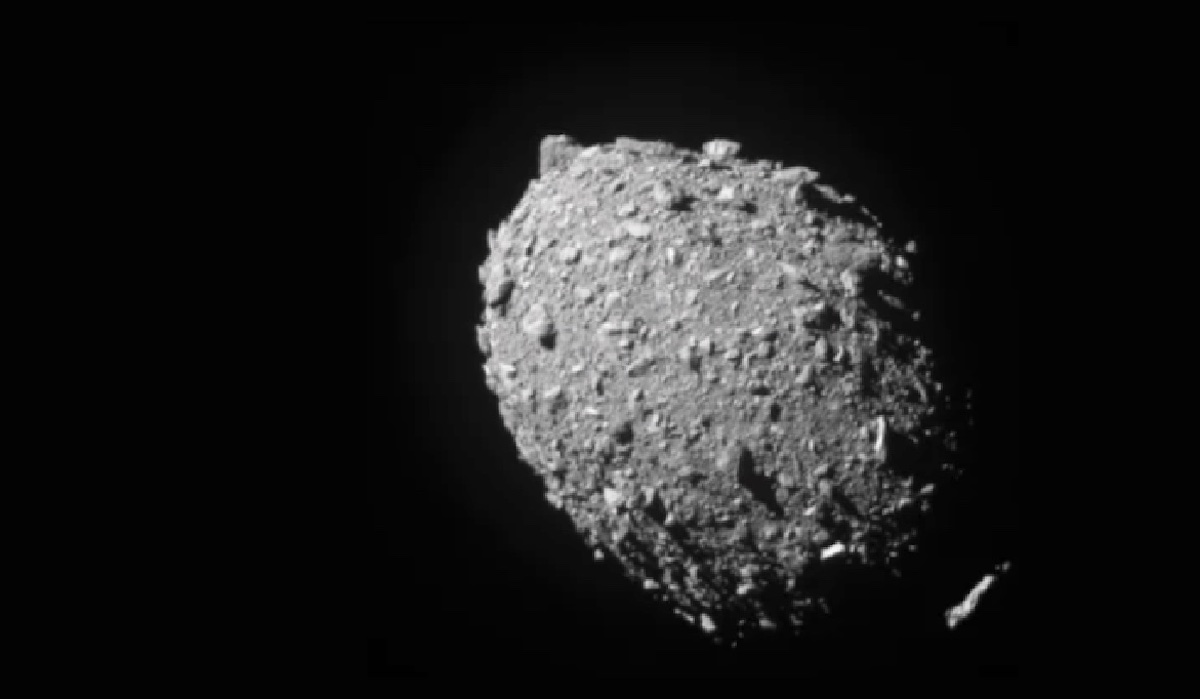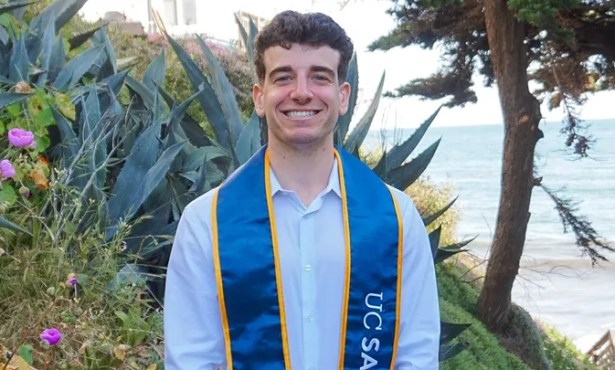DART Mission Accomplished: NASA Spacecraft Slams Asteroid
Goleta’s Las Cumbres Observatory to Continue Observing Dimorphos to Determine If and How Collision Altered Its Orbit

Claps and cheers filled a Cortona Drive conference room Monday afternoon as astronomers with Goleta’s Las Cumbres Observatory (LCO) watched the live feed of an American spacecraft colliding into an asteroid. For those in attendance — who huddled over laptops, whispered among one another, and occasionally glanced up at the big screen — it was the moment they’d been waiting 18 months for.
The dramatic footage began at 3 p.m. with the egg-shaped asteroid, Dimorphos, appearing as a small, white dot against a sea of black that grew larger and larger as the spacecraft drew near. In the final few moments, Dimorphos quickly filled the frame, the details of its rocky surface coming into sharp focus before the broadcast abruptly ended. “We have impact (!)” mission control announced. It was a shot for the ages, a bullseye from 6.8 million miles away.
The planetary defense test ― officially dubbed the Double Asteroid Redirection Test, a k a DART ― was carried out by NASA to determine if we can deflect potentially dangerous asteroids from striking Earth. “DART’s success provides a significant addition to the essential toolbox we must have to protect Earth from a devastating impact by an asteroid,” Lindley Johnson, NASA’s planetary defense officer, said in a statement. “This demonstrates we are no longer powerless to prevent this type of natural disaster.”
As one of the space agency’s key partners, LCO had trained its worldwide network of telescopes on Dimorphos more than a year ago to study its trajectory. The team will now continue observing the asteroid to determine if and how the collision altered its orbit. The data crunching will take some time. Meanwhile, project lead Dr. Tim Lister was surprised to notice the big plume of “ejecta” that blasted from the asteroid’s surface at the moment of impact, and he’s looking forward to figuring out what it means.
“It was amazing to see the mission and the impact go so well, and to see all the great images that came down from DART,” Lister said. “Seeing such a large plume from the impact using LCO’s telescopes in South Africa was unexpected, but there were a lot of unknowns going in, which is why the mission was a needed test. I’m excited to get the telescopes observing again and find out how big a change to the orbit we made in the days and weeks ahead.”
Support the Santa Barbara Independent through a long-term or a single contribution.



